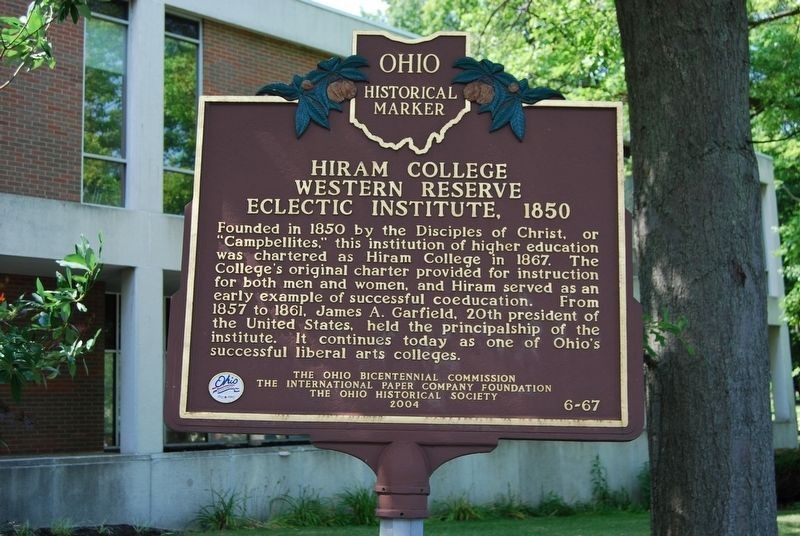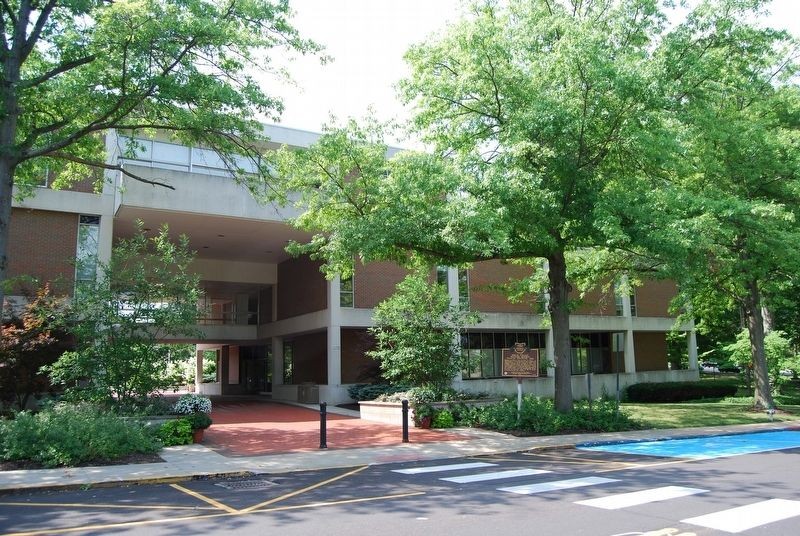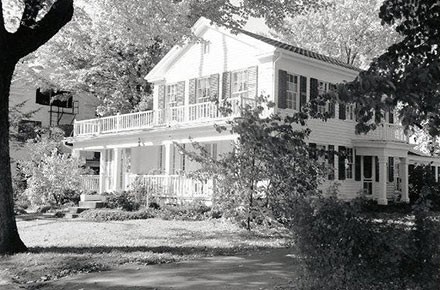Hiram College
Introduction
Text-to-speech Audio
Images
Hiram College Ohio Historical Marker

Hinsdale Hall Hiram College

Garfield's House at Hiram College

Backstory and Context
Text-to-speech Audio
Hiram College was established in 1850 under the name Western Reserve Eclectic Institute. Founded by the Disciples of Christ, this institution was originally a preparatory school. From the beginning, the Institute was known for being coeducational and educating students from a diverse variety of backgrounds.
James A. Garfield, future 20th President of the United States, attended Western Reserve Eclectic Institute from 1851 to 1853, however he earned his degree at Williams College. After earning his degree, he returned to the Institute as an instructor in Greek, Latin, mathematics, and geology. In 1856, he was made principal. Throughout his time at the school, Garfield was heavily involved in expanding the curriculum and adding to the variety of offered classes.
In 1861, Garfield left the Institute in order to command an Ohio Volunteer Infantry Regiment during the Civil War. Despite his absence, he remained active and aware of the growth of the institution. The house he lived in during his tenure is still standing and was bough by Hiram College in 2013. Garfield’s papers from his tenure at Hiram College are kept in the special collections at Hiram College’s library.
Western Reserve Eclectic Institute officially became Hiram College in 1867. In 1870 Burke A. Hinsdale, who was a former student and teacher was named college president. His time as president is significant because he served for 12 years, which is far longer than any of the college’s previous principals and presidents. It is around this time that the college began to gain international recognition and developing its reputation for a small, close-knit faculty focused on academic excellence.
Throughout the years, a variety of presidents worked to make significant changes and improvements to Hiram College. Some implemented plans to increase student enrollment and embarked on ambitious building projects that expanded campus classroom buildings, student housing, a library, and dining services. Kenneth I. Brown (president from 1930 –1940) is known for implementing what became known as the Intensive Study Plan. Under this plan, students would be enrolled in five 7-week terms where they would take one intensive course each term. This might be considered a precursor to Hiram’s current unique term system which was implemented sometime in the late 1900s. Called the Hiram Plan, it divided the school year into two 12-week terms and two 3-week terms. Similar to the Intensive Study Plan, students would take three courses during the 12-week term and one intensive course during the 3-week term.
In recent years, a statue of James A. Garfield was built on Hiram College’s campus to commemorate his involvement and history with the school. In 2010, the statue’s head mysteriously went missing. The reason the head had been stolen was unclear. Eventually, the perpetrators, who had no affiliation with Hiram College, were caught and the head was returned. When the two parts of Garfield’s statue were reunited, a G.P.S. was placed inside the head to protect against further thefts or potential pranks from students.
Sources
History of the College, Hiram College. Accessed August 25 2020. https://www.hiram.edu/about/history-of-the-college/.
History of Hiram, Hiram College Library. Accessed August 25 2020. http://library.hiram.edu/index.php/133-archive/online-collections/1074-history-of-hiram.
Hiram College, Ohio History Central. Accessed August 25 2020. https://ohiohistorycentral.org/w/Hiram_College.
Wintermantel, Mike. Hiram College Western Reserve Eclectic Institute 1850, The Historical Marker Database. August 19th 2018. Accessed August 26 2020. https://www.hmdb.org/m.asp?m=122080.
https://www.hmdb.org/m.asp?m=122080
https://www.hmdb.org/m.asp?m=122080
http://www.clevelandmemory.org/garfield/
